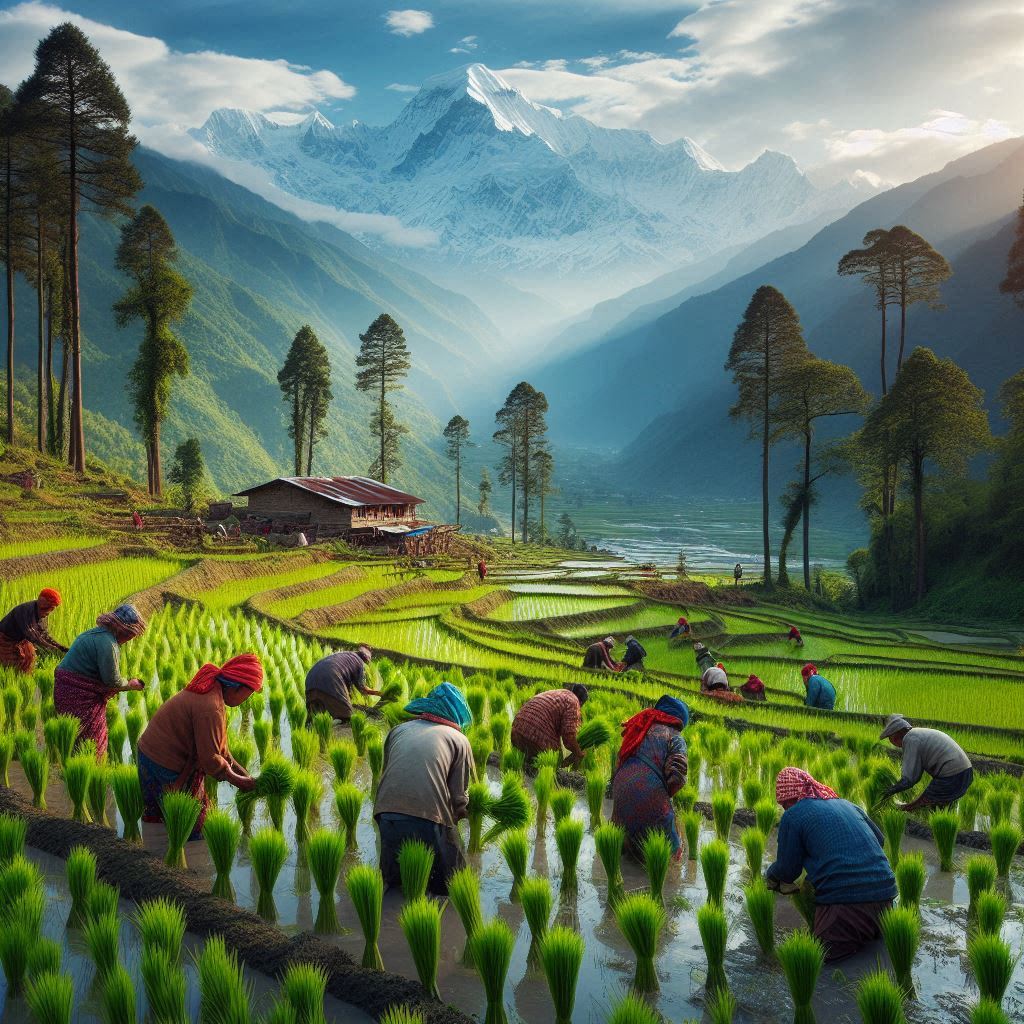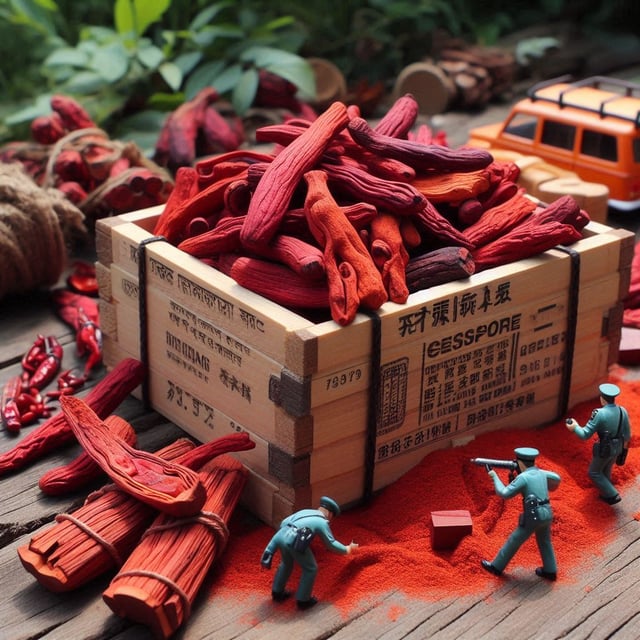Nepali Rice

Nepal a country with a rich diverse narrative has many incredible stories such as the staple food of Nepal rice.
One of the major cities of Nepal Bhaktapur is believed to have driven from the term Bhadgaun which means village of rice. In Newari the native language of Bhagaun, the place is called it Khowpa. Khowpa term is derived from Khopring, assumed to be a Kirati term in which Kho means rice and Pring means village.
Another district Okhaldhunga is believed to be part of a historic kingdom where the Mahabharat era’s hero Bhim had used a stone (dhunga) that was like a mortar (okhal) and beat the rice to remove its husk it and ate it- from which it got its name Okhaldhunga.
Similarly, another legend suggests, that in the Malla era, King Laxmisinha of Kathmandu sent Kaji Bhim Malla who defeated the Kirat and stole their grains, they then used mortar (okhal) like stone (dhunga) to beat to produce meal got the name Okhaldhunga as per people’s folklore. The stone mortar can be easily seen in Siddhicharan Park in Siddhicharan Muncipality-5.
These stories clarify the significance of rice in the socio-cultural context. Uncooked rice is used for worshipping and is called akchyata. Similarly, the first food-eating ceremony for babies are called the ‘rice feeding ceremony’.
There are also rice harvest festivals conducted by Newar known as Yomari Punhi and Udhauli by the Kirati community.
Rice is also used in exorcism and other ritualistic practices and is a complex story that has multiple layers one more intriguing than the previous.
Rice is known to grow in hot and humid climates, making Nepal unique at an altitude of 3010 m. Jumli Marsi Rice is grown. That is considered suitable for diabetic patients and has many other minerals making the rice a high-value commodity.
Karnali is considered a food insecure region- this is misleading as Karnali food shortage is actually rice shortage. The rice was only considered as grain.- however, the Jumli Marsi Rice of Karnali is much more expensive than other variants of rice.
The Marsi rice is tolerant to the cold Himalayan climate and is revered as the holiest food by the locals.
This rice can also boost agro-tourism and change the economics of the poorer part of Nepal.
Rice has a socio-economic impact. When international rice exports started to be documented, Nepal was one of the largest rice exporters but by 1985 it stopped being a net rice exporter and became a net importer of rice. However, Nepal exports rice to Canada, the United States, Italy, and other advanced countries while it suffers a large net deficit while buying rice from India.
One of the reasons why rice imports have increased is because the working-age youth from Nepal have migrated to Gulf and other countries as a result they send remittances from which families purchase cheap Indian rice.
As Nepal continues to depend on rain-fed agriculture, climate change has added havoc. Even in areas where rice traditionally does not grow, the aid has made it accessible as a result they stopped growing local crops.
In Panchayat, the government started airlifting rice to Karnali to counter food insecurities, however, while the government called it food insecurity it was rice insecurity. As a result this only aggravated the situation.
There is also speculation that rice is actually going into the beer production industry and even in the traditional sense rice beer is very popular.
There are also cases of plastic rice produced in Chitwan which stirred controversy. Even in simple topics such as rice, there is so much to discuss and so much can be done to create an amazing documentary.
Author
Kripendra Amatya
Editor
Dana Moyal Kolevzon, Director of International Relations, Nepa~laya Productions
Published Date
September 27, 2024



